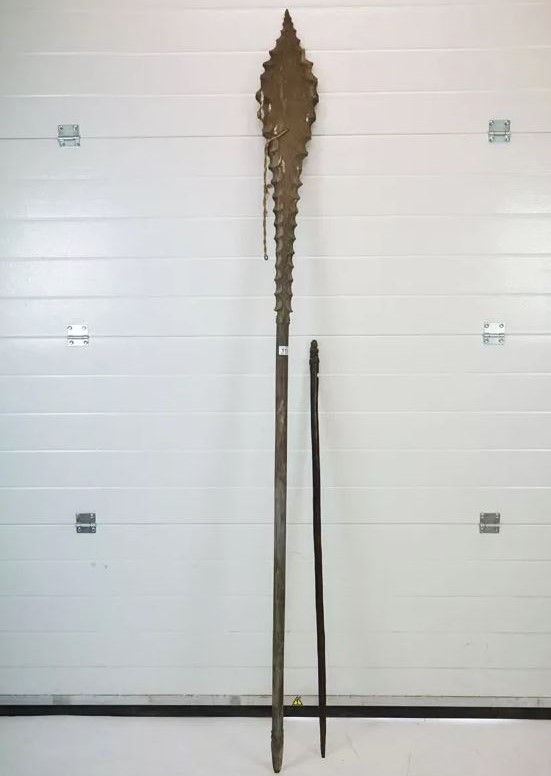Cook Islands pole club fetches $72,000
Monday 11 April 2022 | Written by Cameron Scott | Published in Culture, National

his Cook Islands ironwood pole club (akatara) fetched $NZ72,132) when it was auctioned in England earlier this month. SUPPLIED/22041004
An early Cook Islands ironwood pole club (akatara) with an estimated price of £30-40 ($57-$76), sold for a whopping £38,000 ($NZ72,123) when it was auctioned in England early this month.
Carved from the heart of the toa or ironwood tree, long pole clubs with scalloped blades (akatara) are associated with Rarotonga and Atiu.
Ship surgeon William Anderson noted them during Cook’s Third Voyage while on Atiu in 1777.
“The clubs were about six feet long or more, made of a hard black wood launce shap’d at the end but much broader, with the edge nicely scallop’d and the whole neatly polish’d,” he wrote.
Measuring 2.25 metre, the pole club came up for sale at Wessex Auction Rooms in Chippenham, Wiltshire, on April 2.
According to the auction house, it showed signs of having been dry stored in an outbuilding for many years – bird droppings included, but it might well have been a 19th century survivor.
“If the guide of just £30-40 struck potential buyers as a late April Fool’s joke, then the final bid of £38,000 was certainly no joke,” a Wessex Auction Rooms representative said.
Had the auction house researched the valuable object in depth, the price would perhaps not have been so surprising. Back in 2013, a 3m akatara of similar age was auctioned in San Francisco. An American museum won the bidding war at $NZ99,228.
The item was advertised as carved from the heart of the toa tree and was said to have been typically created for chiefs or members of high status in the community.
In April last year, international auction house Bonhams, auctioned an Atiuan akatara which was expected to fetch up to $NZ90,000. However, in 2013, the same firm sold a late 18th or early 19th century Atiuan akatara for $NZ257,000, making it more valuable than any other Oceanic artefact on offer.














































